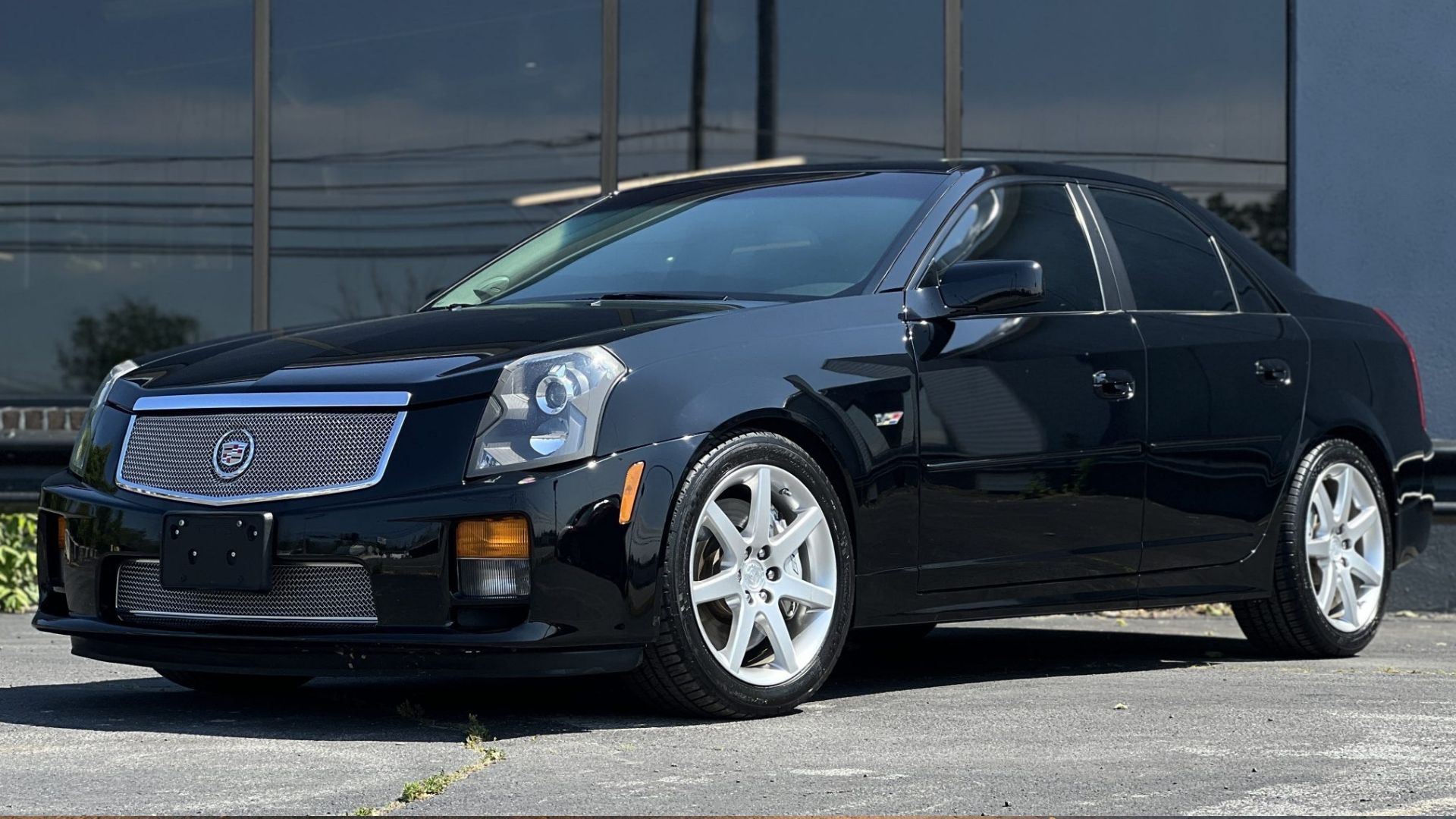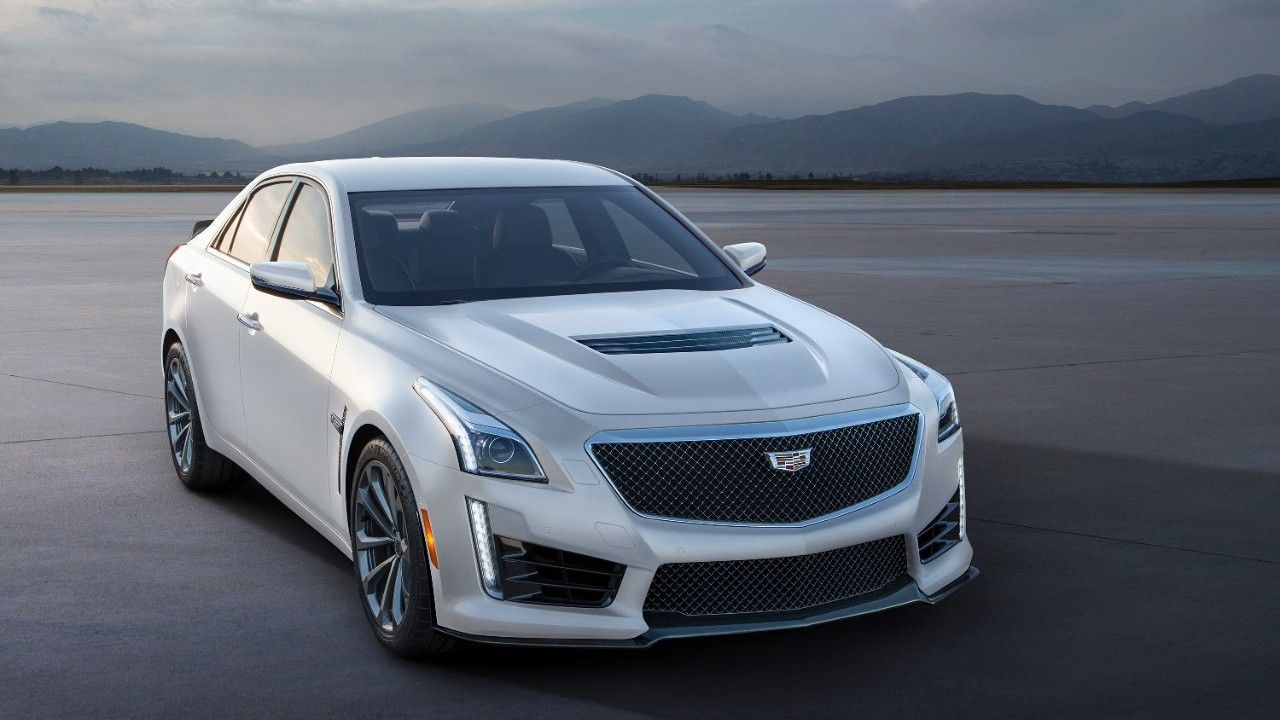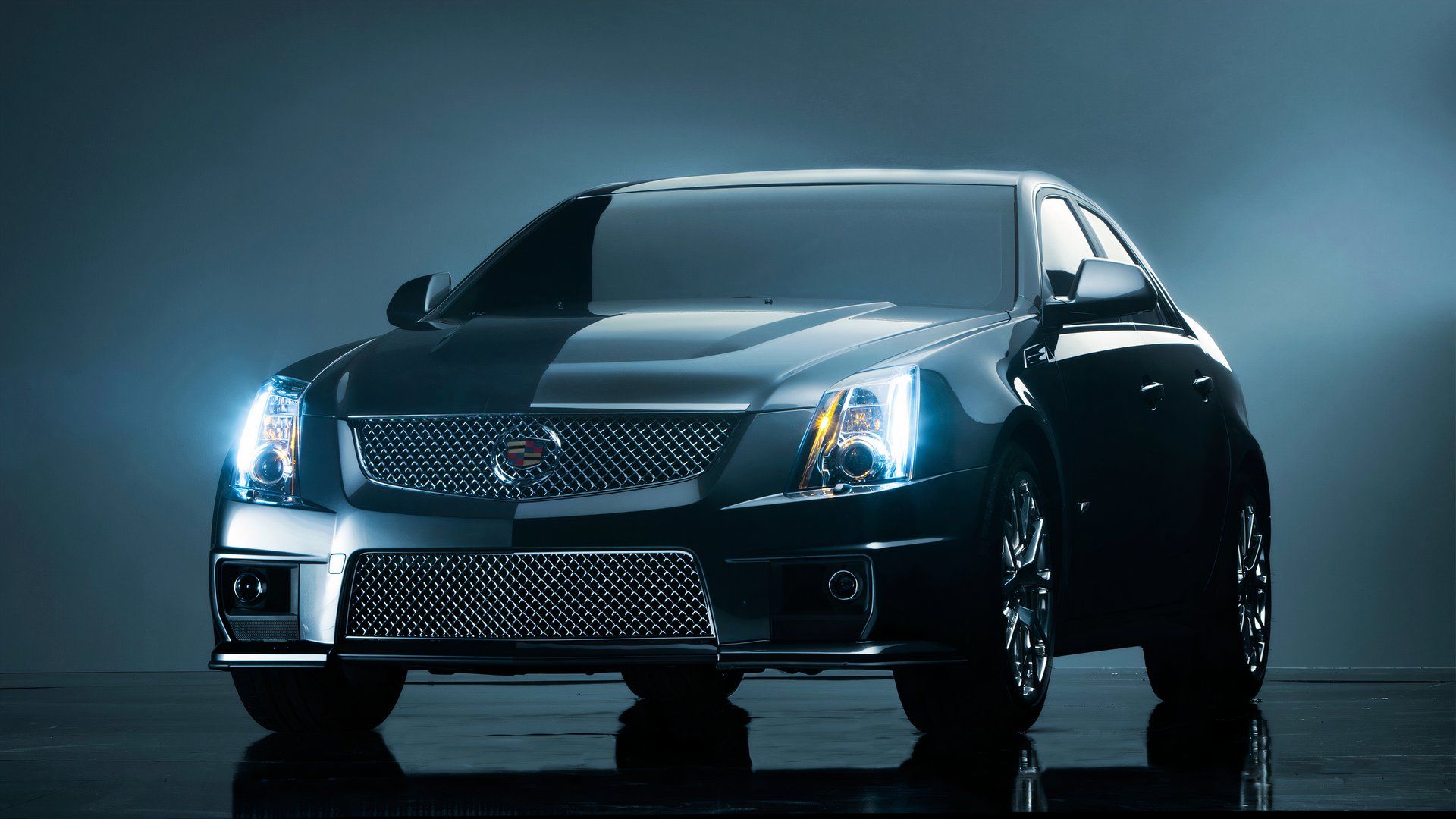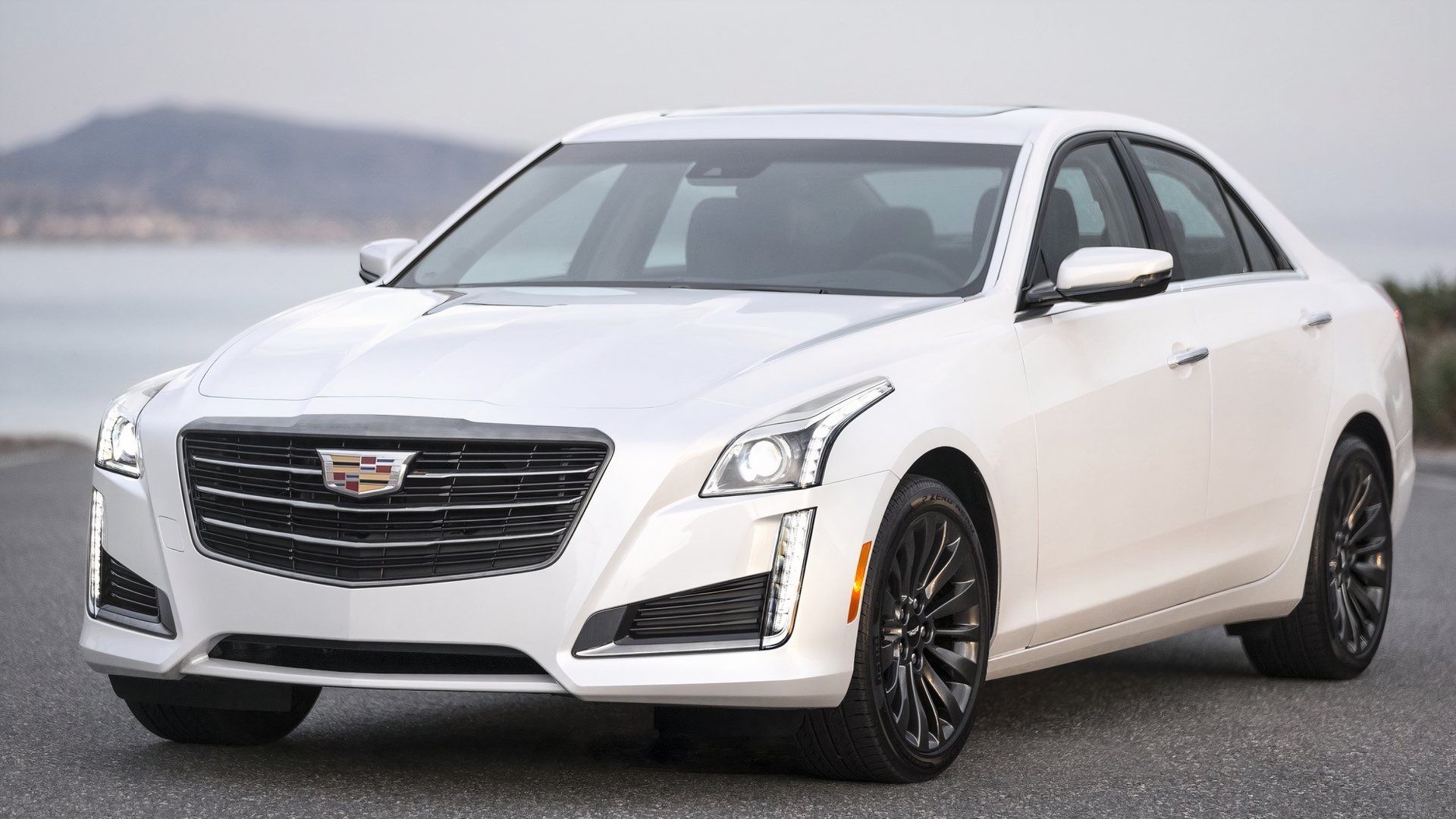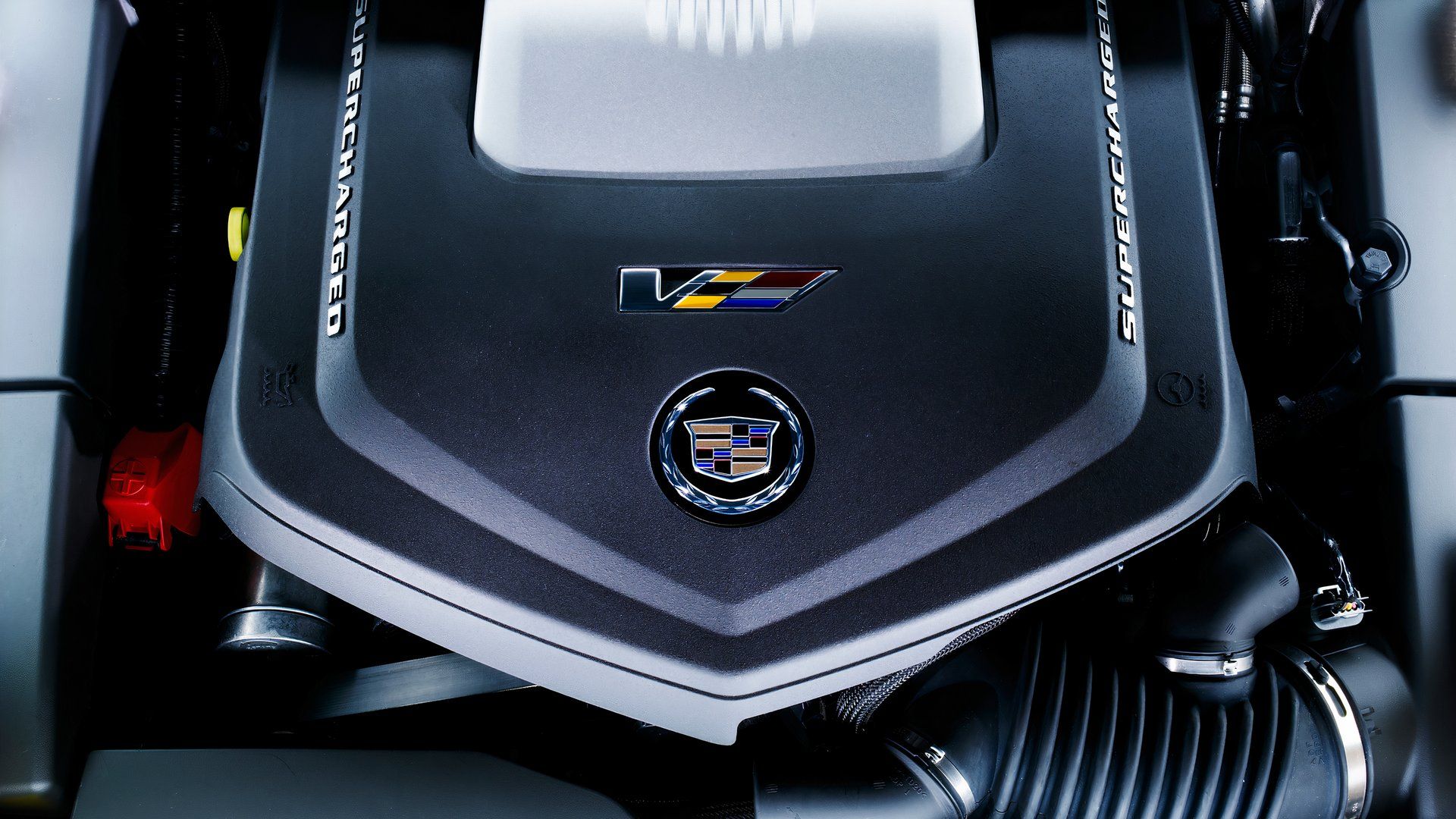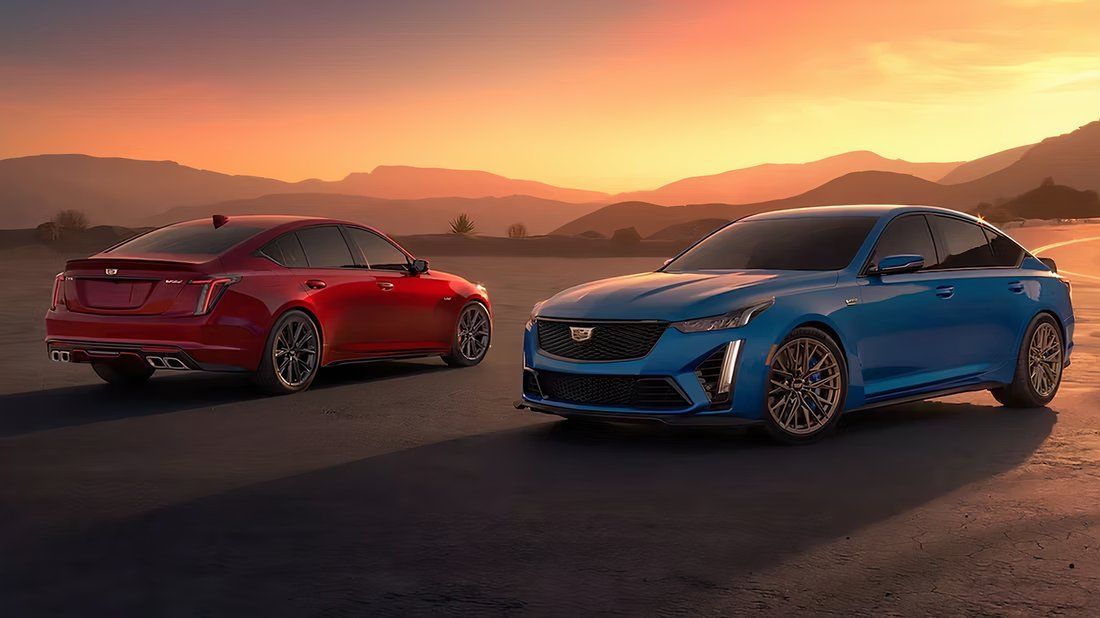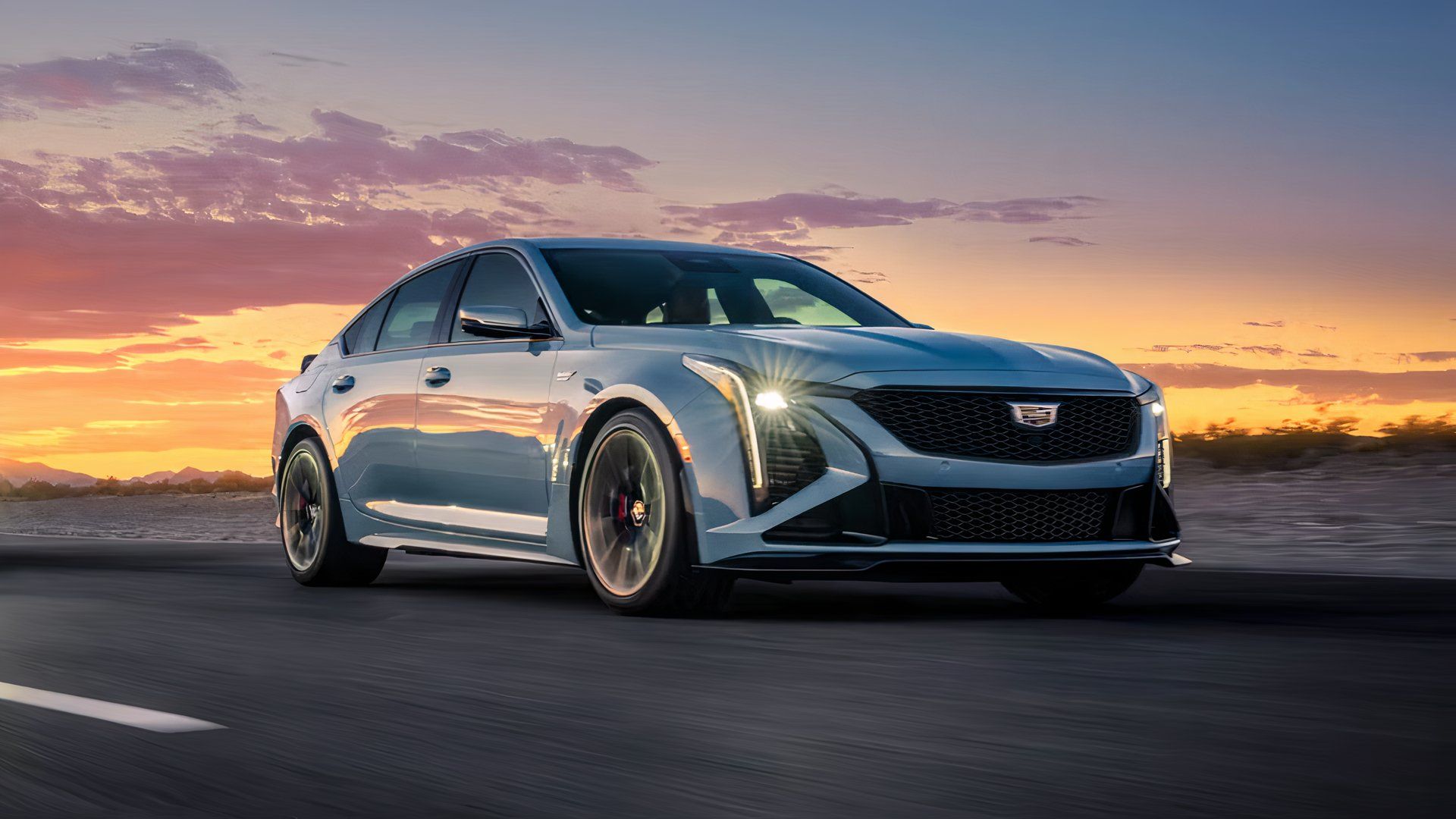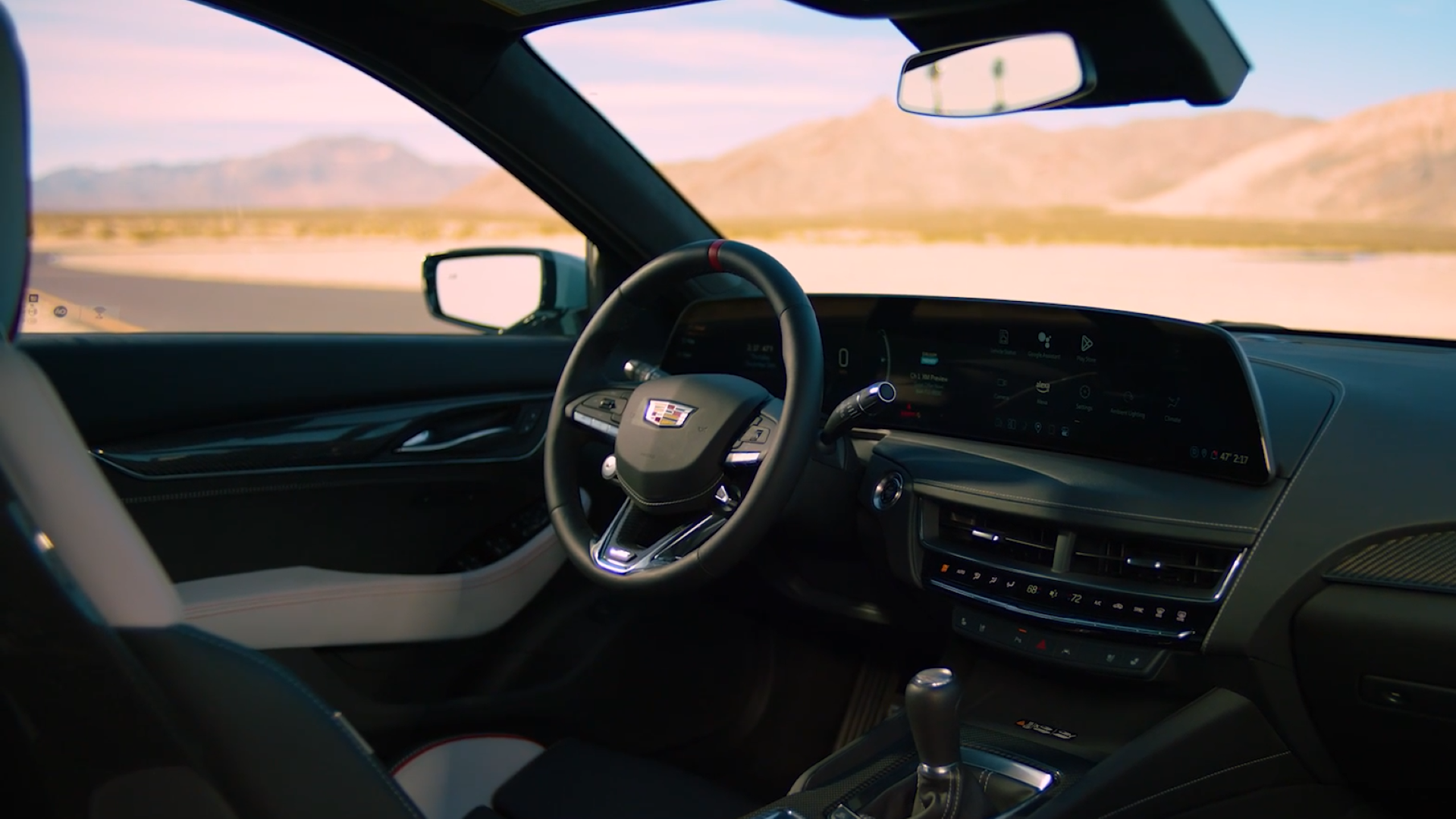The Underrated American Sports Sedan That Embarrassed European Rivals
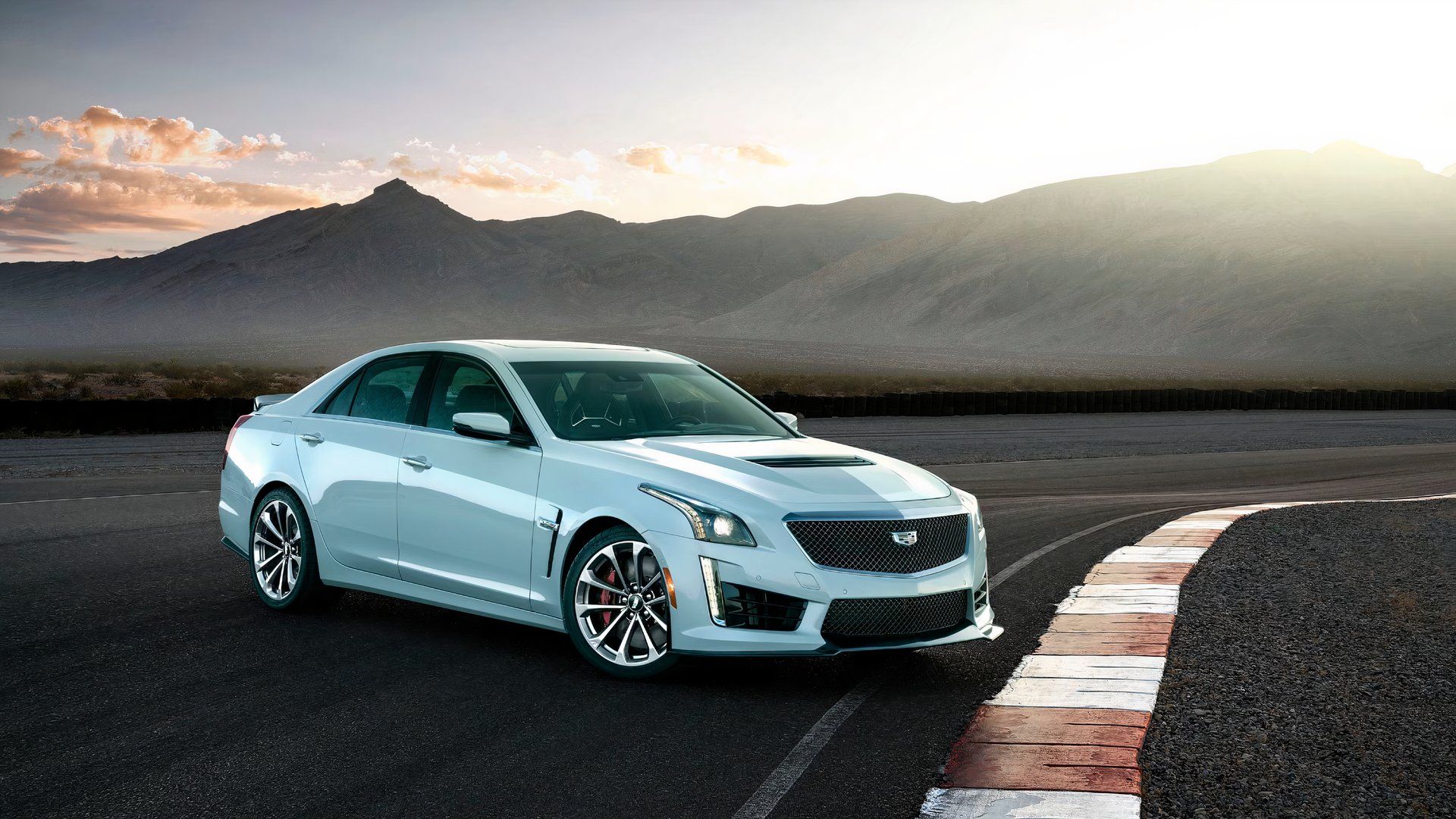
If you’re in the market for a sports sedan, you’ll most likely gravitate toward the German brands. They’ve pretty much dominated the sports sedan market, especially in the premium segment. Brands like BMW, Mercedes-Benz, and Audi have all gained a solid reputation for delivering well-rounded sports sedans with luxury and creature comforts to boot.
Over the years, however, a few challengers have emerged in a bid to put down the German trio with varying levels of success. One of those cars comes from an unlikely source–Cadillac. A brand synonymous with supple luxury as opposed to precise handling, Cadillac has made attempts to outperform the German trio. One of those models that has truly challenged the status quo of the Germans is the Cadillac CTS-V, which, on multiple occasions, managed to be a better BMW M car than what BMW M themselves could do.
Related
Exclusive: Cadillac V Plans On “‘Preserving The Spirit” In An Electrified World, Says Chief Engineer
Alex MacDonald has seen Cadillac’s V division grow from a humble skunkworks project to a force to be reckoned with in street performance.
In order to give you the most up-to-date and accurate information possible, the data used to compile this article was sourced from various manufacturers and other authoritative sources.
The History Of The CTS-V
The Cadillac CTS is a midsize luxury sports sedan that is in the same size category as the likes of the
BMW 5 Series
or Audi A6. This is the sedan that marked Cadillac’s first attempt at pivoting away from its image of soft and supple luxury to one that’s all about precise handling and sporty sensations.
Finding Its Mojo
The CTS made its debut in 2004, and while it was a mostly good luxury sports sedan, it was still finding its mojo. Let’s talk about the highs first, which is undeniably the driving experience. While the E39 M5 at the time was more poised, the CTS-V was brutal and brash. A Car and Driver review of a 2004 CTS-V noted that its V-8 small-block was a major highlight. The engine didn’t just shove a lot of brute force into your body, but it also emitted a ton of baritone noises that could only be described as sensational. The steering was also precise, and it even came with a manual as well.
But things weren’t perfect back in 2024. For one, being an early 2000s General Motors (GM) vehicle, the interior was horrible and downright cheap. Its ride was also harsh and bumpy, as Doug DeMuro would point out, too. Thankfully, while it competes with the M5 in size and practicality, it was priced alongside the smaller E46 M3, which only had two doors at the time. Overall, its value equation is what ultimately sealed the deal. While the M5 was overall a better car, mostly aided by its nicer interior and build quality, is it worth the $23,000 premium over the CTS-V? For the most part, not really. Just be sure you’ve replaced the differential because early CTS-V models had a reputation for failing differentials.
Hitting Its Stride
But it wasn’t until the later generations that the CTS-V would truly hit its stride. Not only was it the precise brute that it was known for, but it finally learned to be a proper luxury sedan. Arguably, the best form of the CTS-V came in the third generation, which ran from 2014-2019. We comprehensively reviewed a 2017 Cadillac CTS-V, which the whole team fell in love with. Like the first iteration, the CTS-V had a lower price tag than the German competition, but finally, that’s been matched with the demeanor of what a luxury sedan should be in the first place.
From a styling perspective, the CTS-V was subtle. Sure, it had stuff like a mesh grille, fender vents, large wheels, a rear spoiler, and even a rear diffuser, but it played along the lines of muscular and subtle in the same way that the Germans in that era would. More importantly, it finally had an interior that truly matched its positioning. Granted, the German trio’s well-crafted interiors at the time still wouldn’t have anything to worry about, but the CTS-V in this era had a far nicer and more luxurious interior.
Thankfully, none of these improvements came at the expense of its fun-to-drive character. In fact, by truly embracing its assignment to out-German the Germans, this generation of the CTS-V was sensational to drive both on track or on sweeping country roads. While sports sedans are numbers game–the one thing that the Germans did so well, the CTS-V was more emotionally appealing, thanks to its sound, the sensations you feel behind the wheel, and the level of connection that only the Cadillac was able to offer, that even the M5 felt cold and sterile.

Related
1,000 HP Hennessey Cadillac Escalade And An Engagement Ring: She Said Yes
A husband and a Hennessey upgrade: To love and to cherish, until trade-in or death us do part. I do.
How Cadillac Made A Potential Future Classic
Okay, so we’re probably making bold claims here, but I do believe that the CTS-V has the potential to become a future classic. It’s the first vehicle from America that challenged the German luxury sports sedan status quo, and then eventually succeeded in certain respects and metrics. Here’s how they were able to achieve such a feat with the CTS-V.
Getting The Fundamentals Right
To build a proper luxury sports sedan, you need the right fundamentals for it to handle like a dream. Thankfully, GM developed the Sigma platform, which was used in the first two generations of the CTS. The Sigma platform had an all-around independent suspension and was designed at the outset to accommodate V-6 and V-8 engines in a rear-wheel drive (RWD) or all-wheel drive (AWD) layout.
The Sigma platform also allowed the CTS range to achieve a near-perfect 50/50 weight distribution–another crucial factor in offering precise handling that follows the driver’s will. As a result, the standard CTS was broadly praised for its precise handling, finally giving the BMW 5 Series a proper rival in America. All that it needed to become a bonkers sports sedan was a lot of spice and everything nice.
Beating The Germans At Their Own Game
All generations of the CTS-V received a V-8–a 5.7-liter LS6 unit from the Corvette Z06 in the first generation, and then a 6.0-liter LS2 unit as the first generation model was in its final two years. Both engines had a 400-horsepower and 395-pound-feet output, but the latter engine’s bigger displacement gave it a wider torque band. With the second-generation model, Cadillac finally realized that it needed adaptive dampers to offer a supple ride whilst retaining its precise handling.
Thus, GM’s MagneRide dampers finally made their appearance in the 2009 CTS-V. The V-8 has grown once again in size, now an LSA 6.2-liter unit, and a
supercharger
means it now produces 556 horses and 551 pound-feet. This is also the first time that a six-speed automatic was offered alongside the Tremec six-speed manual.
But perhaps the peak of the CTS-V in terms of polish and performance came in the third generation model. A chief contributor to this was its new Alpha platform–a highly-renowned platform that is credited with making the CTS, ATS, and now, the CT4 and CT5 sedans truly world-class luxury sports sedans. In the CTS-V from 2016 to 2019, this sports sedan combined excellent handling with a supple ride thanks to further improvements to the MagneRide dampers.
A power bump once again was introduced, thanks to the 6.2-liter LT4 supercharged V-8 that pumped out 640 horsepower and 630 pound-feet of torque, though this is where the six-speed manual was unfortunately ditched. That’s a small penalty, however, for what has essentially become the best CTS-V to be ever released.
|
First Generation (2004-2007) |
Second Generation (2009-2014) |
Third Generation (2016-2019) |
||
|
Engine |
5.7-liter V-8 (2004-2005) |
6.0-liter V-8 (2006-2007) |
6.2-liter supercharged V-8 |
6.2-liter supercharged V-8 |
|
Layout |
Front engine, rear-wheel drive |
Front engine, rear-wheel drive |
Front engine, rear-wheel drive |
|
|
Horsepower |
400 hp |
556 hp |
640 hp |
|
|
Torque |
395 lb-ft |
551 lb-ft |
630 lb-ft |
|
|
Transmission |
6-speed manual |
6-speed manual 6-speed automatic |
8-speed automatic |
|
|
0-60 mph |
4.6 sec. |
3.9 sec. |
3.5 sec. |
|
|
Top speed |
163 mph |
191 mph |
200 mph |
|
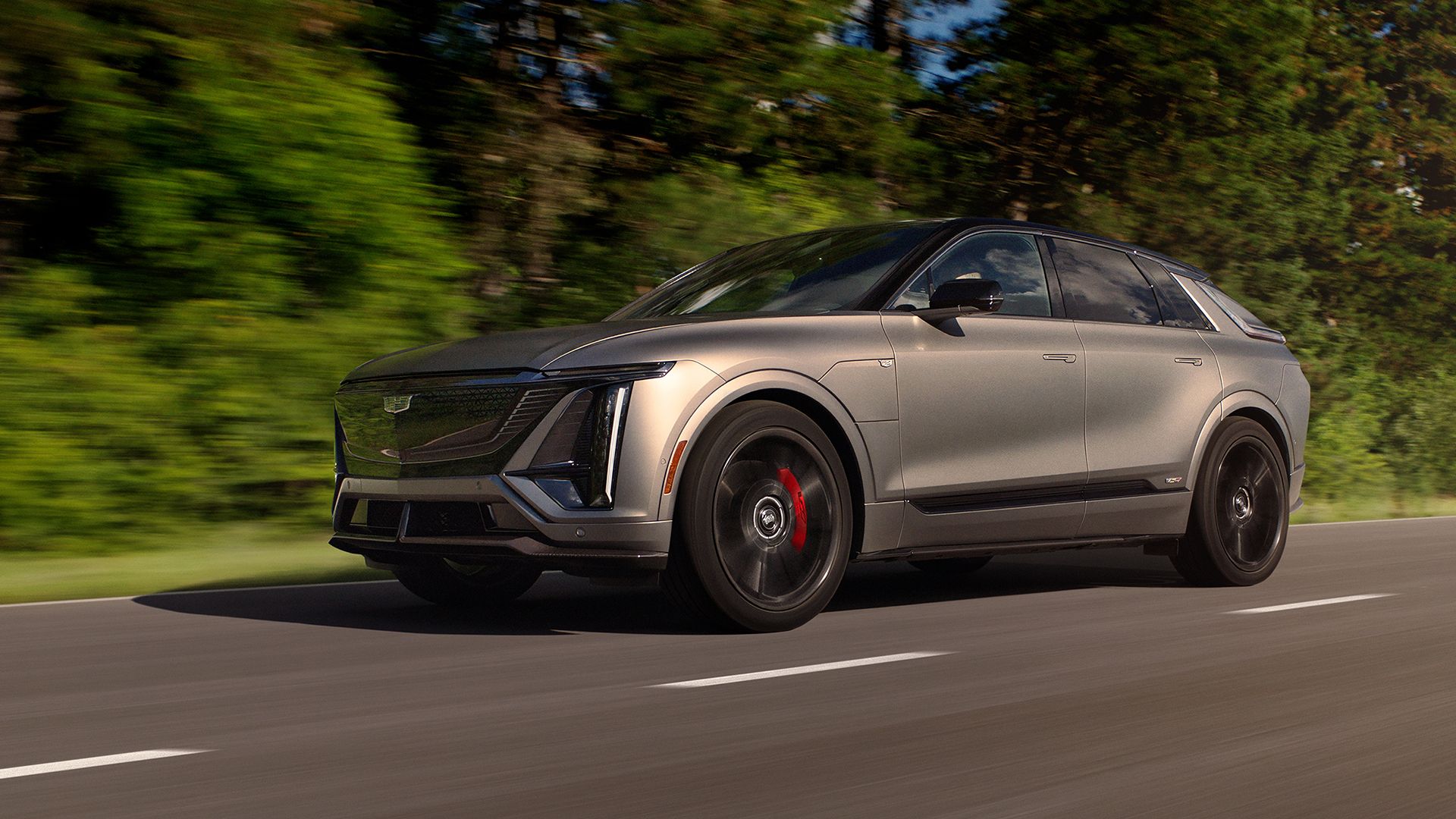
Related
2026 Cadillac Lyriq-V Launched With 615 Horsepower Of Furious EV Might
Cadillac unleashes its first-ever, all-electric high-performance V model in the form of the popular Lyriq SUV.
How The CTS-V’s Legacy Lives On
Unfortunately, all good things have to come to an end, as CTS-V production ceased after the 2019 model year. Though the CTS-V may have been technically discontinued, its replacement has come in the form of the CT5-V–another midsize sports sedan that, both subjectively and objectively, is a better-handling and driving car than the
BMW M5
it’s competing with.
The CT5-V Is The CTS-V With A New Name
In all honesty, however, the CT5-V probably could have been just the CTS-V. The CT5-V is a direct successor to the CTS-V, mostly as part of a renaming strategy for Cadillac that simply complicated rather than simplified things. What used to be the ATS became the CT4, while the CT5 is what used to be the CTS. Despite the name change, it didn’t change the fact that the CT5-V was finally a better car to drive than the Germans.
That’s because unlike in Europe, where complex emissions regulations have forced automakers to make their cars complex and downright heavy through electrification (I’m looking at you, BMW M5 plug-in hybrid) the CT5-V isn’t subject to similar constraints, since it isn’t even sold in Europe. Therefore, its 6.2-liter
supercharged V-8
is more powerful than ever at 668 horses and 659 pound-feet of torque without the need for electrical assistance. Its steering, handling, and ride equation are all so polished at this point, while its interior after this 2025 mid-cycle facelift is a far more high-tech and luxurious place to be in. Dare we say it, we love the CT5-V more this time around than the BMW M5.
|
2025 Cadillac CT5-V Blackwing |
2025 BMW M5 |
|
|
Engine |
6.2-liter supercharged V-8 |
4.4-liter twin-turbocharged V-8 PHEV |
|
Layout |
Front engine, rear-wheel drive |
Front engine, all-wheel drive |
|
Horsepower |
668 hp |
717 hp |
|
Torque |
659 lb-ft |
738 lb-ft |
|
Transmission |
6-speed manual 10-speed automatic |
8-speed automatic |
|
0-60 mph |
3.5 sec. (6-speed M/T) 3.4 sec. (10-speed A/T) |
3.4 sec. |
|
Top speed |
200 mph |
155 mph |
|
Base MSRP |
$94,890 |
$120,675 |
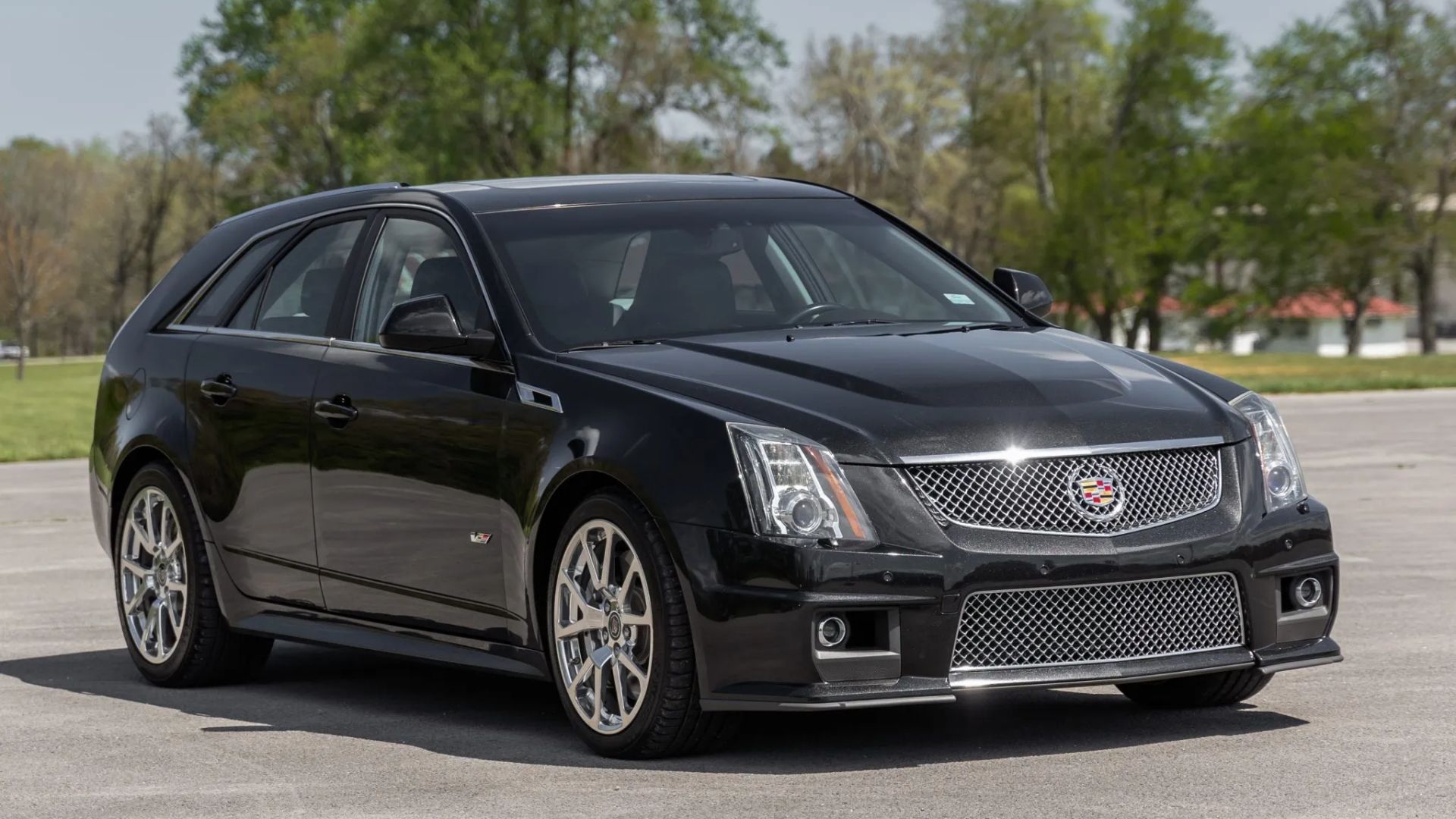
Related
The Rarest Luxury Car To Ever Be Produced In America
Cadillac’s 14-year-old supercharged wagon is a rare find that costs more than many modern luxury vehicles.
But Sales Are Free Falling
Unfortunately, there’s a reason why we say that the CTS-V (and thus, the CT5-V) is an underrated sports sedan, sales-wise. That’s because of two challenges. For one, Cadillac’s image has always been about soft and supple luxury, not precise handling and sportiness. If you wanted that kind of car, BMW was your go-to brand. At the same time, the market only has so much room for another brand trying to outperform the Germans at their own game. BMW already owns this market, and this has left Cadillac with an identity crisis.
Furthermore, the CT5-V is probably a vehicle that came at the wrong time. You see, the world today is moving towards electrification, and as a result, with ever-stricter emissions regulations, the CT5-V is living on borrowed time. Not to mention that SUVs and crossovers continue to dominate the sales charts–even Cadillac’s own.
The
fully electric Lyriq
has become Cadillac’s second-best-selling model, with sales growing by 210 percent. The CT5 and CT4? They experienced a sales decline in 2024, even if a mid-cycle facelift was introduced. I think it’s time to give Cadillac’s sports sedans the attention they deserve–especially the CT5-V and its manual and V-8 as our swansong before the world goes electric.
Related
Here’s how Cadillac can become a true American F1 dream…
Credit: Instagram Cadillac (@cadillac) Cadillac F1 stands to have a huge chance to be an American team by and for Americans, something that Formula 1 so badly
Stephen A. Smith Contract Extension – Work Less, Earn More,…
Stephen A. Smith has just landed the contract of his life with ESPN!
American Athletic Conference becomes first league to set ‘minimum standard’…
The American Athletic Conference approved an initiative on Friday to establish a minimum standard of benefits that schools are required to share with athletes i
The NWSL is the first top American sports league to…
When NCAA All-American striker Diana Ordóñez debuted in the NWSL in 2022, there was little more that she could ask from her rookie season with the North Carol
